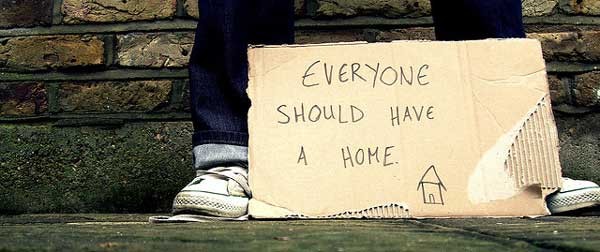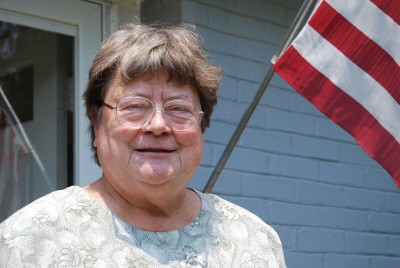
(5-2-16) The Justice Department, many mental health advocates and federally funded protection and advocacy groups are opposed to group homes and housing that resembles an institutional setting. The goal is for everyone to live independently in their own apartment.
But is it realistic to believe that everyone can live on their own if they have a severe mental illness and other debilitating challenges?
My good friend Trudy Harsh, the driving force behind the non-profit Brain Foundation, believes that some individuals need services that are best delivered in a group setting or multi-person facility. That’s currently a politically unpopular point of view, but Trudy is speaking from her experiences not only as a housing activist but also as a mother.
If you are a regular reader of this blog, you are familiar with Trudy’s story. She grew tired of attending countless community meetings where everyone complained about a lack of affordable housing in Fairfax County, Virginia, but didn’t do anything to help resolve those complaints. Talk without action is meaningless so Trudy used her experience as a real estate broker to obtain a low interest loan from the Virginia Housing Development Authority in 2006 to buy a house for persons with brain diseases (she refuses to call them mental illnesses.)
She named it Laura’s House, after her daughter, Laura, who developed a brain tumor at age eight and underwent surgery that left her stunted emotionally and physically. (Laura faced numerous challenges for the next thirty years until her death in 2006.)
Trudy contracted with Pathway Homes, a local mental health provider, to oversee care for residents in Laura’s House. Her formula — of having a non-profit group finance a house — caught on. It was copied in Florida. Today, there are nine Brain Foundation houses in our community and last Saturday, I spoke at a fundraiser for the Brain Foundation, which I would urge you to support.
In addition to creating these nine group homes, Trudy believes Fairfax needs to construct two larger facilities patterned after Stevenson Place, which is not far from my home. It is a dormitory style facility composed of six “neighborhoods.” Each neighborhood is located in a wing of the building and each wing contains six separate bedrooms with full baths, a communal living room and a kitchenette.
Trudy gave me a tour of Stevenson Place a few years ago. At that time, it was staffed round-the-clock by a total of 33 employees. The workforce included a registered nurse, a nurse practitioner, two mental health therapists, a psycho-social rehab specialist, and a psychiatrist, who was on call. Meals were provided, as well as, classes on social skills and job placement for those capable of working part-time.
Stevenson Place describes itself as a:
… non-institutional, warm and homelike environment which addresses the needs of all residents for a stable, safe, and supportive place to live…designed to empower and encourage residents to recover and to realize their individual potential in the least restrictive environment in which they are capable of living.
The top goal of Stevenson Place is:
to emphasize consumer empowerment, choice and a sense of self-determination through incentives and encouragement for resident to assume increasing responsibility and control over their own lives.
Who lives at Stevenson House?
All thirty-six bedrooms were occupied when I visited. Fourteen of the residents had come directly from state mental hospitals, ten had lived previously in supportive housing that had proved too much for them to handle, four had lived with their families, two had been living in homeless shelters, two others had come from assisted living facilities outside Fairfax County, and three had arrived after being evicted from apartments.
Half of the residents had severe and persistent schizophrenia. Forty percent had been diagnosed with schizo-affective disorder and the final ten percent had other mental disorders that interfered in their daily lives, including severe depression.
Let’s dig a bit deeper. In addition to those mental illnesses, eighty percent of the residents had additional personality disorders that made it challenging for them to live independently. The other twenty percent had intellectual disabilities and/or developmental disorders that required them to have daily help.
Despite all of these challenges, one fourth of the residents were able to work part-time in our community at jobs in national chains such as Red Lobster, IHOP, Wegmans and Food Lion.
When I visited, I asked how many of the residents had moved out from Stevenson Place during the seven years that it had been operating. Sixteen had moved. Five residents had gone into nursing facilities because they needed more nursing care than could be provided at Stevenson Place. Three had moved into less restrictive independent housing. Two had transferred to a group home, two others had returned to a state hospitals for more intense inpatient care, two others had gone to live with their families, one had ended up being arrested and was in jail, and one had died.
The goal was to help those, who were capable, to move into a less restrictive environment but there was no hurry to push them out the door.
“Laura could not live independently,” Trudy told me. “She just couldn’t survive without getting daily help.”
Now let’s look at the cost.
Stevenson Place’s per person cost per day was $86.07 when I visited it. The average per person, per day cost of housing someone at a Virginia state hospital is $2,680. It is $1,753 in a nonprofit hospital and $1,878 inside a for-profit one. The cost of an 8-person group home in Virginia is $258 per person per day. The cost of housing an inmate in the Fairfax detention center is $145.49 per day.
This means that Stevenson Place is much less expensive than the current housing alternatives in Fairfax County. (I am not including the costs of Housing First and an ACT Team because those services are in short supply and the clientele in Stevenson Place routinely require more intensive services.)
If Stevenson Place is more economical than hospitals, group homes, and jail –if it helps persons who haven’t been able to live successfully in a less restrictive environment by providing them a safe, home-like environment where they have their own room, receive nutritious meals, have access to medical help and job training, why isn’t the county building more facilities like them? Why are other counties and states not replicating this successful model?
The answer: fear and politics.
The Olmstead Act, which requires states to place qualified individuals with mental disabilities in community settings, is being used by the Justice Department to close group homes and facilities such as Stevenson Place. They want everyone to live in an apartment. Period. End of discussion.
I understand why the Justice Department and others oppose group homes and residential facilities. When I did research in Miami for my book, there were 650 Assisted Living Facilities there that housed about 4,500 individuals. Only 200 of those ALFs could pass the state’s minimum standards for operating as a group home. The others were granted waivers by the state to operate at lower standards than the norm. One home I visited had a hole in the roof that rain poured through, medications were scattered on a kitchen table, meals were rice and beans, the caretaker spoke only Spanish but none of the tenants did. There was no therapy, no counseling, nothing but half-dressed residents smoking cigarettes and staring at a black and white television. It was inhumane.
Our fear of institutional living is rooted in our past. For decades, many state hospitals were giant warehouses where residents were neglected, marginalized, dehumanized and abused. One writer in Oklahoma compared state hospitals there in the 1960s to Nazi concentration camps.
I understand those fears.
But the group homes that the Brain Foundation operates are well-run, integrated housing in suburban neighborhoods. There are safeguards. People are treated with respect. Stevenson Place also is a welcoming, clean, and modern home-like facility. It fills a niche often missing in most states.
When I visited, there were 95 individuals on the Stevenson Place waiting list. There currently are some 150 individuals in Virginia state hospitals waiting to be discharged but unable to leave because there are no facilities in their communities that can accommodate them.
Currently, there is a FIVE year wait in Fairfax County if you have a mental illness and need supportive housing.
Many of the residents of Stevenson Place would fall into the “frequent user” category of persons with severe mental disorders. That’s the group that often spend their lives homeless or in jails and prisons. That’s the group caught in revolving door of despair. That’s the group that traditionally uses as much as half of all local mental health dollars yet rarely receive the services that are necessary to help them recover. 
Despite the need to provide housing to this group, Trudy Harsh is a lone voice in supporting group homes and multi-unit facilities. She risks being publicly pilloried for daring to say that some people may not be able to live independently and do better in a group home or a multi-housing unit.
Fear and politics triumph.



